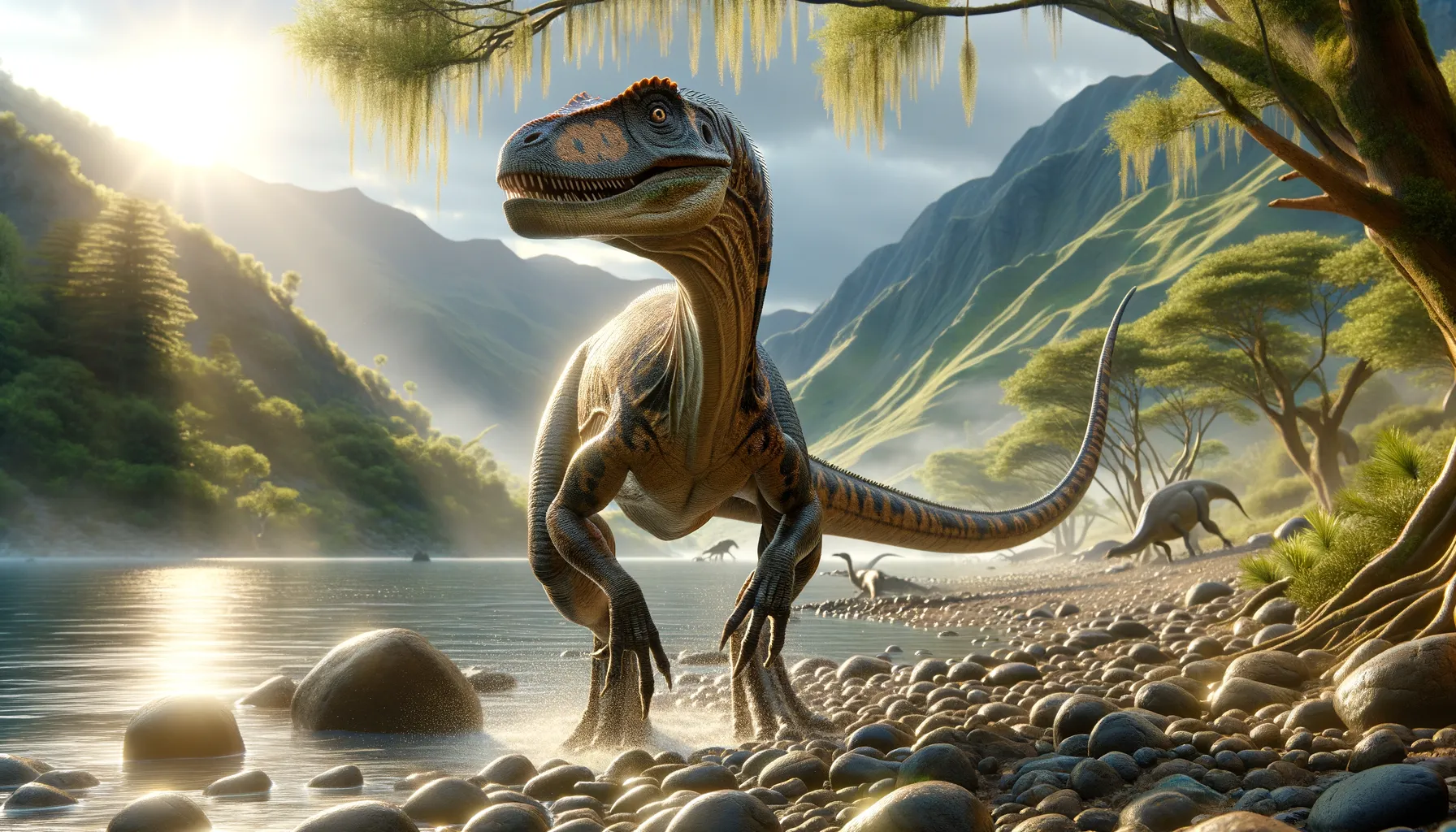
Ornithosuchus
The Triassic's agile archosaur predator
Period
Triassic
Length
Around 2.5 meters (8.2 feet) long.
Height
Approximately 1 meter (3.3 feet) tall.
Weight
Roughly 30-40 kg (66-88 lbs).
Ornithosuchus was a fascinating reptilian predator that resembled early dinosaurs but was actually part of a distinct evolutionary branch. Living during the late Triassic period, this creature was a formidable presence in its environment with a lightweight body that suggested a capacity for agile movement. While not a true dinosaur, Ornithosuchus provides important insights into the evolution of archosaur reptiles that dominated the land before the rise of their dinosaur relatives.
Diet
Ornithosuchus was primarily a carnivore, feeding on smaller animals that lived in its environment. It likely relied on its speed and agility to catch prey, such as small reptiles and early mammals.
Hunting
While hunting, Ornithosuchus may have used ambush tactics to surprise its prey. Its sharp teeth and strong jaws enabled it to quickly capture and dispatch smaller creatures, ensuring a steady food supply.
Environmental challenges
During the Triassic period, climatic fluctuations and changing habitats posed significant challenges. Ornithosuchus had to adapt to varying food availability, competing with other predators in its ecosystem. The diversity of its prey might have been affected by these changes, requiring Ornithosuchus to explore different strategies to find sustenance.
Speed
Fairly agile for its time.
Lifespan
Estimated around 20-30 years.
First discovery
First discovered in Scotland in the 19th century.
Fun Facts
- Ornithosuchus was not actually a dinosaur but a distant relative. It belonged to a group of reptiles called archosaurs.
- It lived during the Late Triassic period, approximately 228 to 205 million years ago.
- Ornithosuchus was a carnivore and likely hunted small animals using its sharp teeth.
- This creature grew to be about 2 to 4 meters long, which is roughly the size of a small car.
- Despite what its name suggests, Ornithosuchus is not closely related to modern birds.
- The name 'Ornithosuchus' means 'bird crocodile' due to its mix of bird-like and crocodile-like features.
- Its fossils were first discovered in Scotland, providing valuable insights into the diversity of prehistoric life.
Growth and Development
Ornithosuchus exhibited growth patterns typical of early archosaurs, with rapid development during its juvenile phase. It likely reached near full size quickly to enhance its chances of survival. Such growth rates would have been crucial in navigating the competitive environment of the Triassic period.
Habitat
Ornithosuchus inhabited regions that were likely lush with vegetation, with plenty of cover for both hunter and prey. The environment offered a variety of landscapes, from forests to river valleys, providing rich hunting grounds and ample territory for this predator.
Interaction with other species
Interactions with contemporaneous archosaurs might have ranged from competition to predation. Ornithosuchus could have been both predator and prey, navigating its food chain with the agility and cunning necessary to survive among both rivals and larger predators.
Natural lifespan
Ornithosuchus lived to about 20-30 years.
Reproduction
Ornithosuchus likely reproduced by laying eggs, as many reptiles do. The nesting habits and care post-hatching remain speculative, but these behaviors were vital for ensuring the survival of its offspring in a diverse ecosystem.
Social behaviour
There is limited information on the social behavior of Ornithosuchus. It might have been solitary, focusing primarily on individual survival and territorial control. Interaction, when it occurred, probably centered around feeding opportunities and mating seasons.
Fossil locations
Fossils of Ornithosuchus have been notably found in Scotland. Such discoveries have provided key insights into its anatomy and lifestyle, despite being limited in number and scope.
